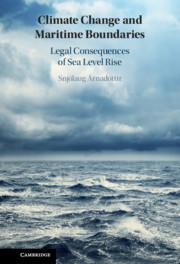Description
Climate Change and Maritime Boundaries
Legal Consequences of Sea Level Rise
Author: Árnadóttir Snjólaug
Language: English
Subject for Climate Change and Maritime Boundaries:
Approximative price 109.06 €
In Print (Delivery period: 14 days).
Add to cart
Publication date: 12-2021
304 p. · 15.9x23.5 cm · Hardback
304 p. · 15.9x23.5 cm · Hardback
Description
/li>Contents
/li>Biography
/li>
Coastal States exercise sovereignty and sovereign rights in maritime zones, measured from their coasts. The limits to these maritime zones are bound to recede as sea levels rise and coastlines are eroded. Furthermore, ocean acidification and ocean warming are increasingly threatening coastal ecosystems, which States are obligated to protect and manage sustainably. These changes, accelerating as the planet heats, prompt an urgent need to clarify and update the international law of maritime zones. This book explains how bilateral maritime boundaries are established, and how coastal instability and vulnerable ecosystems can affect the delimitation process through bilateral negotiations or judicial settlement. Árnadóttir engages with core concepts within public international law to address emerging issues, such as diminishing territory and changing boundaries. She proposes viable ways of addressing future challenges and sets out how fundamental changes to the marine environment can justify termination or revision of settled maritime boundaries and related agreements.
Introduction; Part I. Law of the sea and the changing marine environment: Part II. Unilaterally declared maritime limits: Part III. Maritime delimitation and coastal instability: Part IV. Maritime delimitation and the marine environment: Part V. Fundamental change of circumstances: Part VI. Conclusion.
Snjólaug Árnadóttir is a Lecturer at Reykjavik University and member of the International Law Association Committee on International Law and Sea Level Rise.
© 2024 LAVOISIER S.A.S.
These books may interest you

The International Law of the Sea 59.21 €



